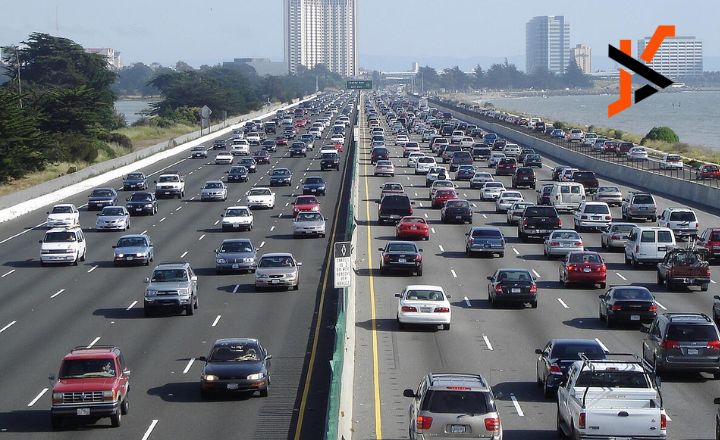When I first pondered the question, “How many wheels are in the world?” I realized that it’s not just a simple arithmetic problem. It’s a fascinating exploration of transportation, technology, and human creativity. Wheels are ubiquitous daily, powering everything from bicycles and cars to industrial machinery and airplanes. In this article, I’ll delve into various factors that contribute to the total number of wheels in existence. I hope to provide you with insights that will broaden your understanding of this seemingly straightforward query.
The Ubiquity of Wheels
Wheels are one of humanity’s most revolutionary inventions, dating back thousands of years. Initially used for pottery, wheels evolved into a critical component of transportation. Today, they play a vital role in numerous sectors, including automotive, aerospace, and logistics. To grasp how many wheels are in the world, we need to consider different categories where wheels are used.
1. Vehicles on the Road
Let’s start with the most obvious: road vehicles. According to recent statistics, there are over 1.4 billion cars on the road globally. If we assume that the vast majority of these cars have four wheels, that alone accounts for approximately 5.6 billion wheels. But we mustn’t forget about other types of vehicles:
- Bicycles: With around 1 billion bicycles worldwide, that adds another 2 billion wheels.
- Motorcycles: There are an estimated 200 million motorcycles, contributing 400 million wheels.
- Trucks and Buses: Commercial vehicles vary widely in wheel count. A typical truck might have six wheels, while a bus could have up to eight. If we estimate around 300 million trucks and buses combined, that could represent roughly 1.5 billion wheels.
When you start adding these numbers together, you quickly realize that the total from just road vehicles alone could be around 10 billion wheels.

2. Non-Road Vehicles
Next, let’s consider non-road vehicles. This includes everything from industrial machinery to recreational vehicles:
- Forklifts and Heavy Machinery: In warehouses and construction sites, forklifts and other machinery often have multiple wheels. With millions being used globally, we might estimate around 3 billion wheels in this category.
- Trains: A train wheel typically weighs a lot and is designed for durability. With thousands of trains operating worldwide, the number of train wheels can easily reach into the billions. For instance, a single train could have 32 wheels, and with over 20,000 freight trains in the U.S. alone, we can estimate around 1 billion wheels here.
3. Toys and Other Uses
Wheels aren’t just for transportation; they are also found in countless toys, appliances, and everyday items:
- Toys: Think about toy cars, action figures with wheels, and even rolling toys for toddlers. If we conservatively estimate that there are 2 billion toy wheels worldwide, that adds another significant chunk.
- Office Equipment: From rolling chairs to carts, these wheels add to the tally as well. It’s estimated that office environments worldwide might contribute around 500 million wheels.
4. The Impact of Technology on Wheel Design
As technology advances, the design and function of wheels are evolving. Innovations in materials science are leading to the production of lighter, more durable wheels that can withstand greater stress while reducing fuel consumption in vehicles. For example, carbon fiber wheels are becoming more common in high-performance vehicles, offering significant weight savings compared to traditional aluminum or steel wheels.
The rise of electric vehicles (EVs) has introduced new designs tailored for efficiency. Many EVs utilize wheel designs that optimize aerodynamics, which can enhance range and performance. As the automotive industry shifts toward sustainability, we can expect further developments in wheel technology that not only improve performance but also reduce environmental impact.
5. Wheels in Emerging Markets
As developing nations continue to grow economically, the demand for vehicles and, consequently, wheels, has surged. Countries like India and China are experiencing rapid urbanization, leading to increased vehicle ownership. In urban areas, motorcycles and scooters are becoming the preferred mode of transport due to their affordability and efficiency. This trend is contributing significantly to the global wheel count.
As public transportation systems expand in these regions, buses and trains will also add to the total wheel tally. The proliferation of ride-sharing services is another factor; with more people opting for shared rides, the number of wheels in use is likely to rise even further as services expand their fleets to meet demand.
Putting It All Together
Now, if we add all these categories, we can start to see a clearer picture:
- Road Vehicles: ~10 billion wheels
- Non-Road Vehicles: ~4 billion wheels
- Toys and Miscellaneous: ~2.5 billion wheels
This brings our rough estimate to around 16.5 billion wheels in the world. It’s important to note that this number is inherently approximate, as it’s difficult to account for every wheel due to factors like wear and tear, production rates, and the life cycle of these items. However, this estimate provides a fascinating glimpse into the sheer number of wheels in circulation.
The Future of Wheels
As we look to the future, the number of wheels in the world is likely to change. With the rise of electric vehicles and autonomous technology, we might see more vehicles on the roads. Innovations in transportation, like flying cars or personal drones, could introduce entirely new forms of wheeled transport.
In urban areas, the trend toward shared mobility solutions could impact the total number of wheels. For instance, ride-sharing services, electric scooters, and bike-sharing programs are becoming increasingly popular, potentially leading to a decrease in the number of privately owned vehicles and their wheels.

Conclusion
When we ask, “How many wheels are in the world?” we uncover a vast network of interconnected systems that reflect our society’s dependence on mobility. From cars and bicycles to toys and machinery, wheels are an integral part of our daily lives. My rough estimate of 16.5 billion wheels serves as a reminder of just how pervasive this invention is. As technology advances and our modes of transportation evolve, the number of wheels will continue to change, reflecting our ongoing journey toward innovation and sustainability.
I hope this exploration has not only answered the question but also sparked your curiosity about the role wheels play in our world. Whether you’re driving to work, riding a bike, or simply pushing a cart at the grocery store, remember the incredible journey that every wheel represents. By understanding the significance of wheels in our lives, we can appreciate the ingenuity behind this simple yet profound invention.

